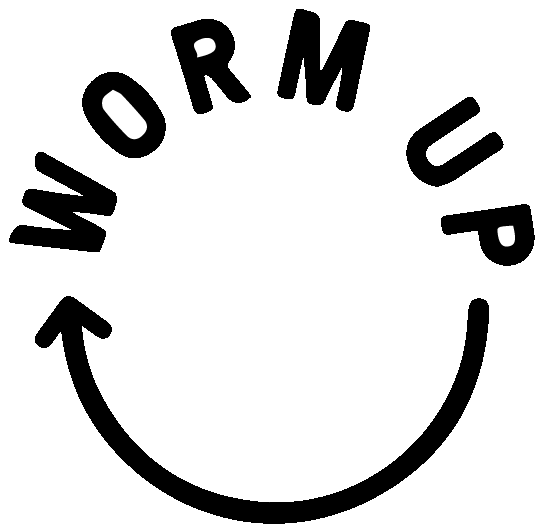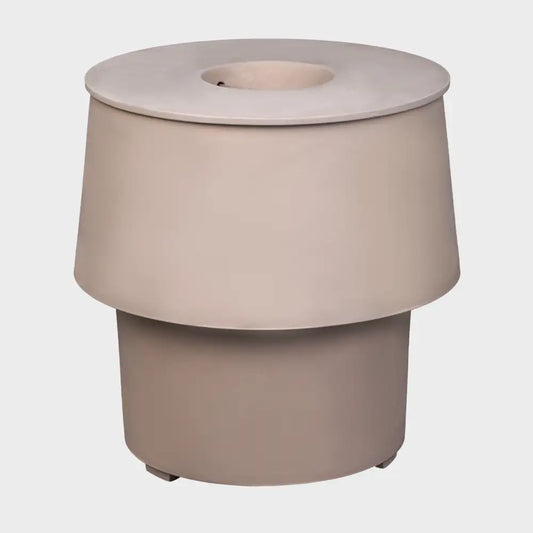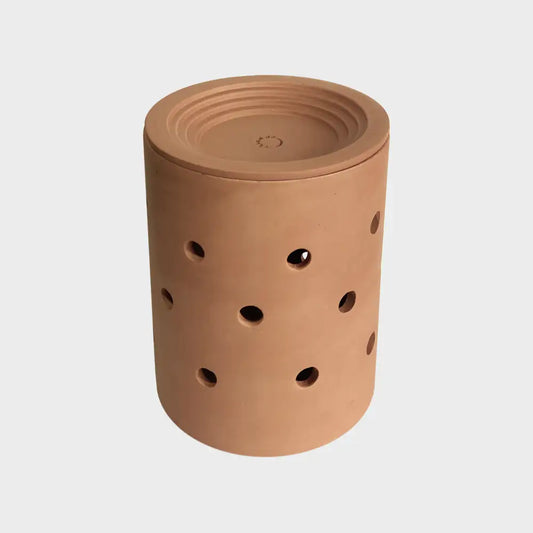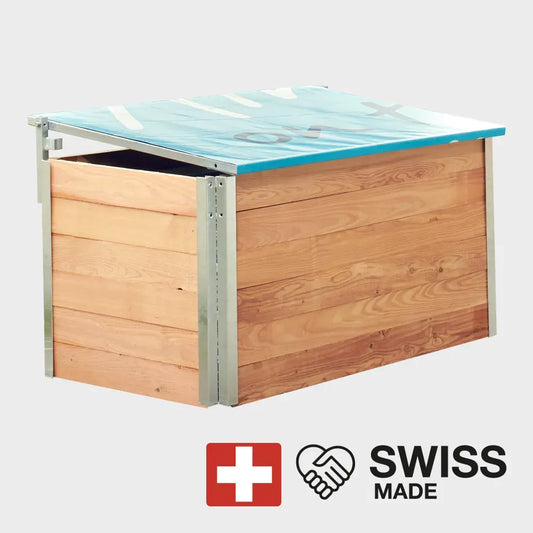Back to instructions
General
QUANTITY AND TEXTURE
- In worm composting, waste can be added continuously - from several times a day to once a week.
- Chop up your waste (e.g., with scissors).
- Spread the waste over the entire surface.
- Smell: It smells like earth and slightly like what was last fed (e.g., banana or onion). If it smells unpleasant, something is wrong, and there is not enough air in the compost. Mix in structural material and/or additives like soil or minerals and reduce the amount of feed.
- The amount you can add to the composter depends on how quickly the waste decomposes. The decomposition speed depends on various factors such as temperature, moisture, types of waste, and others.
- The amount you can put in the composter depends on how quickly the waste breaks down. The degradation rate depends on various factors such as temperature, humidity, waste types, and others.
- Observe: Has the top layer already sagged a bit, much of it lightly browned and begun to compost? Then you can add fresh waste. The amount of waste (food) depends on the speed of decomposition.
- Digging is not necessary for worm composting, the worms do this for you.
- Feel: When loosening by hand, you will get a feel for the structure and moisture in your composter.
HUMIDITY
Humidity is one of the most important factors in composting and should be checked regularly. Worms breathe through moist skin and can only survive in a moist environment.
Feel: The compost should be comfortably damp, like a squeezed sponge or garden soil, a few hours after it rains.
If the compost is too moist, add dry structural material and temporarily reduce the amount of feed.
If the compost is too dry, add water. Please note the product-specific information.
TEMPERATURE
Compost worms work most effectively between 12° and 26°C. In the garden composter (WormUp SCALE, TUBE) and in the compost heap, the worms hide themselves in heat and frost - with the indoor/balcony composter (WormUp HOME) temperatures of over 35°C and frost must be avoided. If the WormUp HOME is outdoors, we recommend a shady spot that is protected from rain. In winter it should be brought indoors.
Feel: The compost should feel lukewarm. If the compost is significantly warmer than the ambient temperature, you have probably added too much or too much protein-rich feed. Reduce the amount of food and mix in structure material or soil.
WORMS & CO-INHABITANTS
Compost worms can be used in the indoor/balcony composter (WormUp HOME), in the garden composter (WormUp SCALE, TUBE) and in compost heaps, but not in heat composters. They have an average life expectancy of two years. If they feel good, they multiply quickly. The worm population always adapts to the food supply.
The composting process in vermicompost is the result of the cooperation of earthworms with a multitude of other creatures - the food web in the compost, which is similar to the food web in the soil. These invertebrates each have their own niches and perform important functions in converting dead cellular material into mature compost.
Observe: In addition to the earthworms, you can observe many other animals. The easiest to observe are enchytraea, compost mites (these are harmless to health and should not be confused with the allergenic house dust mites), and springtails. Individual populations of fellow residents sometimes multiply by leaps and bounds - in most cases their occurrence regulates itself again after a short time (1-3 weeks).
Whatever little animals you find, the general rule is: most are extremely important and useful. A few can deplete the worm population, such as the centipede. Various mini-fly species can also occur. The fruit flies usually come with the skins from the fruit, various types of miniature mosquitoes, such as the fungus gnat or dung flies, are more attracted to the ripe hummus. These can be annoying, but they are not harmful. If they're too annoying, see the background information on how to get rid of them quickly.
It's all about the mix - What goes in, what doesn’t
"SOFT" ORGANIC WASTE
Waste, which worms particularly like: (also, or especially when they are already becoming soft or moldy):
- leftover vegetables
- Leftover fruit, including banana peels
- Ginger, chillies, leftover mushrooms
- tea sets, compostable tea bags
- Coffee grounds (max 30% of the amount added)
- Egg shells (crushed or ground/ground into powder)
- lawn clippings
- Manure from pets, preferably vegetarian, such as rabbits and hamsters
Waste which, in order to avoid odors, should be added in rather small quantities and dug up a little:
- citrus fruits
- Onion & garlic bulbs (the skins are good)
- Starchy (bread, pasta, rice)
- High protein (lentils, beans, chickpeas)
"HARD" ORGANIC WASTE = STRUCTURAL MATERIAL
Structural materials are woody/fibrous and are characterized by their slower degradability. They stabilize the biological process during composting and contribute to aeration. Mix in 30-50% (volume) of the waste. If there is enough structural material, valuable nutrients are also stored in the mature compost.
- Small branches
- stem
- (Egg) carton
- panicles
- corn cob
- straw
- root
- Onion Garlic Peels
EXCIPIENTS
Excipients increase tolerance in the mini ecosystem. Mineral additives balance and thus support the acid-base balance in the composter. In addition, they have a positive effect on the quality of the mature compost. We recommend an addition of up to 10% to the starting material.
- Mineral mixes (e.g. WormUp Mineral Mix)
- rock flour
- garden lime
- Earth (from natural soil, not forest soil)
- egg shells (ground as finely as possible)
NO WORM FOOD
- mustard, mustard seeds
- Vinegar / Vinegar Products
- cooked leftovers
- salted leftovers
- meat, bones
- Ash, charcoal, cigarette butts
- plastic, metal, glass
- Pet feces (from meat eaters like cats and dogs)
You can find more information in our feeding list. Basically, the more diverse the worm food, the better.
worm castings
GENERAL
The WormUp vermicompost systems are designed in such a way that the harvest of the mature humus, which is predominantly worm-free, is easy and the worms remain in the system. This is achieved with the help of chambers (horizontal or vertical). The worms migrate into the chamber with the fresh food, the paused chamber can then be harvested (see also product-specific operating instructions).
Observe: If there are still many worms in the chamber/floor that you want to harvest, this is a sign that the compost is not yet fully mature. Fluff up this area and wait a few weeks before harvesting.
APPLICATION & DOSAGE
Vermicompost is suitable for vegetables, fruit, flowers, lawns and trees. Spread the worm castings around the plants or on the bed and work it in a bit. When replanting in the garden, put some compost in the planting hole or in the seed furrow. In plant pots, up to 20% of the finished vermicompost can be mixed with the purchased or garden soil - no further fertilization is necessary. If necessary, fertilize with half the recommended amount in summer.
- Hotbed 0.25 – 0.5 l / m2
- Vegetables with high nutritional requirements: leeks, cabbage, celery, tomatoes, potatoes 1 – 2 l / m2
- Vegetables with medium nutritional requirements: lettuce, spinach, endive, carrots 0.5 – 1 l / m2
- Vegetables with low nutritional requirements: cress, lamb's lettuce, radishes, beans, peas, onions 0.2 – 0.5 l/m2
- Spring and summer flowers 0.2 – 0.5 l / m2
- Perennials, shrubs and trees 0.5 - 1 l / m2
Measuring tip:
1 handful of vermicompost = 0.15 l
1 yoghurt pot of vermicompost = 0.2 l
STORE WORM HUMUS
Worm castings work best if they stay moist but still get air. It should be kept cool in a heap covered with fleece or stored in air-permeable bags. (Eg in the white bags in which the worms are delivered, an open plastic bag with a few air holes is also suitable). Stored in this way, mature vermicompost can be kept for 4-6 months without any loss of quality.
Discover our products
-
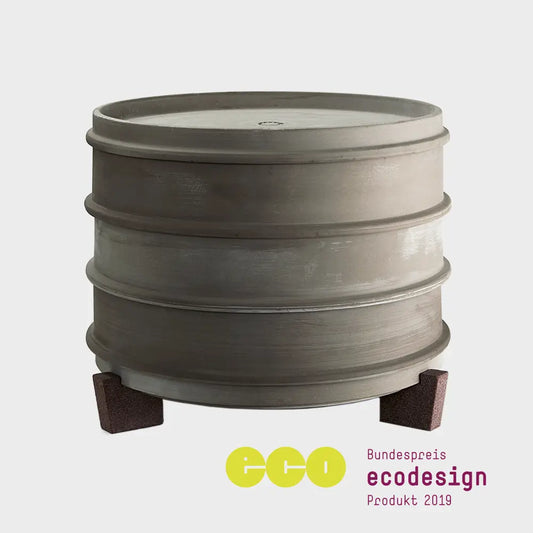 Sold outRegular price From CHF 298.00Regular priceUnit price per
Sold outRegular price From CHF 298.00Regular priceUnit price per
